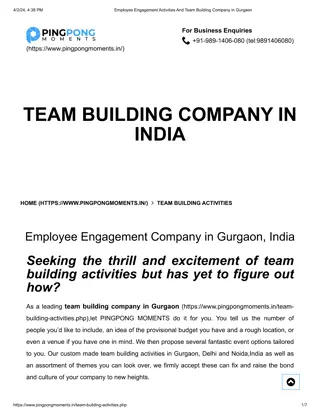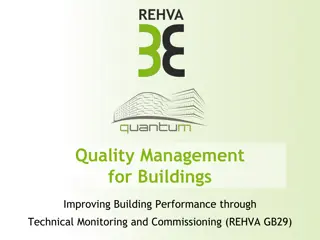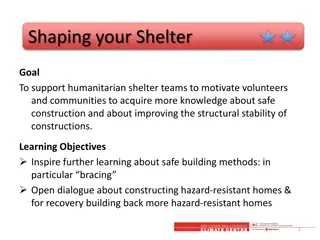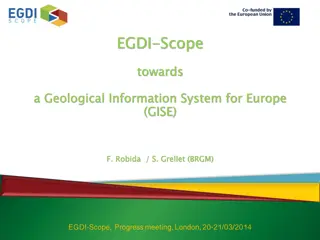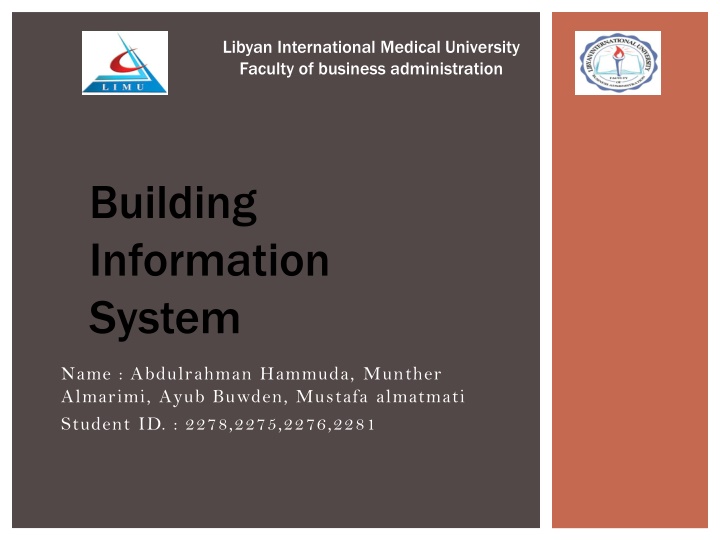
Understanding Building Information System Development and Organizational Change
Explore the world of Building Information Management System (BIM) technology, its impact on organizational change, system development, and the various forms of IT-enabled change such as automation and rationalization. Dive into the intricacies of deploying new information systems and its effects on business processes and overall organizational structure.
Download Presentation

Please find below an Image/Link to download the presentation.
The content on the website is provided AS IS for your information and personal use only. It may not be sold, licensed, or shared on other websites without obtaining consent from the author. If you encounter any issues during the download, it is possible that the publisher has removed the file from their server.
You are allowed to download the files provided on this website for personal or commercial use, subject to the condition that they are used lawfully. All files are the property of their respective owners.
The content on the website is provided AS IS for your information and personal use only. It may not be sold, licensed, or shared on other websites without obtaining consent from the author.
E N D
Presentation Transcript
Libyan International Medical University Faculty of business administration Building Information System Name : Abdulrahman Hammuda, Munther Almarimi, Ayub Buwden, Mustafa almatmati Student ID. : 2278,2275,2276,2281
CONTENT Introduction Building Information System System Development and Organizational Change Overview of System Development Alternative System-Building Approaches Conclusion References 2
INTRODUCTION What is Building Information Management System (BIM) technology? BIM allows designers to create 3D models. Once architects design a building, contractors use the same model to construct it; when a building is finished, the owners use BIM to schedule maintenance and complete infrastructure updates. 3
BUILDING INFORMATION SYSTEM Building a new information system is one kind of planned organizational change. The introduction of a new information system involves much more than new hardware and software. It also includes, Changes in jobs, Skills, Management and, Organization. When we design a new information system, we are redesigning the organization. System builders must understand how a system will affect specific business processes and the organization as a whole 4
SYSTEM DEVELOPMENT AND ORGANIZATIONAL CHANGE Information technology can promote various degrees of organizational change, ranging from steady to far-reaching. The diagram shows four kinds of organizational change : (1) Automation, (2) Rationalization, (3) Business process redesign, and (4) Paradigm shifts. 5
SYSTEM DEVELOPMENT AND ORGANIZATIONAL CHANGE The most common form of IT-enabled organizational change is AUTOMATION. The first applications of information technology involved employees with performing their tasks more effectively. Calculating pay checks and pay roll registers are examples of early automation. assisting efficiently and Slow-moving strategies and slow-changing 6
SYSTEM DEVELOPMENT AND ORGANIZATIONAL CHANGE RATIONALIZATION of procedures is streamlining of standard operation procedure, eliminating bottleneck, so that automation can be made more efficient obvious Both Rationalization can cause some disruption, but manageable and easily accepted by the people Automation and it's usually 7
SYSTEM DEVELOPMENT AND ORGANIZATIONAL CHANGE REDESIGNING disruption. Because many companies use it as a guide for downsizing the organization and laying off workers. can cause radical Business redesigning causes planners to completely : Rethink the flow of work. How the work will be accomplished, and How eliminating unnecessary work and worker costs can be reduced by 8
SYSTEM DEVELOPMENT AND ORGANIZATIONAL CHANGE PARADIGM SHIFT : A paradigm shift involves rethinking the nature of the business and the nature of the organization. This category of Structural Organizational Change is more radical as compared to the Business Procedure Redesign. It changes the very nature of the business and the structure of the organization itself. (A whole new products or services that didn't even exist before). 9
OVERVIEW OF SYSTEM DEVELOPMENT New information systems are an outgrowth of a process of organizational problem solving. A new information system is built as a solution to some type of problem or set of problems the organization perceives it is facing. The problem may be one in which managers and employees realize that the organization is not performing as well as expected, or that the organization should take advantage of new opportunities to perform more successfully 10
OVERVIEW OF SYSTEM DEVELOPMENT The activities that go into producing an information system solution to an organizational problem or opportunity are called Systems Development. Systems development is a structured kind of problem solved with distinct activities. These activities consist of : Systems analysis, Systems design, Programming, Testing, Conversion, and Production and maintenance. 11
ALTERNATIVE SYSTEM-BUILDING APPROACHES Systems differ in terms of their size and technological complexity and in terms of the organizational problems they are meant to be solved. A number of systems building approaches have been developed to deal with these differences. This section describes these alternative methods: The traditional systems life cycle, Prototyping. 12
ALTERNATIVE SYSTEM-BUILDING APPROACHES 13
ALTERNATIVE SYSTEM-BUILDING APPROACHES 14
CONCLUSION Most businesses use technology to enhance Building information systems. An information system is any system that is used to organize data which then is disseminated to appropriate people within the organization. Information systems don't have to consist of computers, networks, and other digital technologies 15
REFERENCES Eastman, Chuck; Tiecholz, Paul; Sacks, Rafael; Liston, Kathleen (2008). https://www.gim- (international.com/content/article/building-information- system#:~:text=A%20BIS%20is%20the%20most,built%20the% 20BIS%20are%20twofold.) Eastman, Chuck; Tiecholz, Paul; Sacks, Rafael; Liston, Kathleen (2011). (https://www.witpress.com/books/978-1- 78466-275-2) Ruffle S. (1986) "Architectural design exposed: from computer-aided-drawing to computer-aided-design" Environments and Planning B: Planning and Design 1986 March 7 pp 515-550. 16
THANK YOU FOR LISTENING 17


